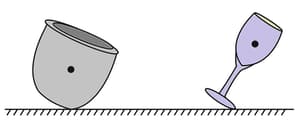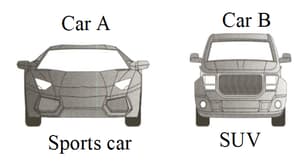In figure, the beam is balanced (in equilibrium). Calculate the size of force .
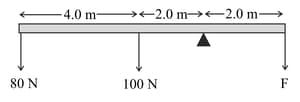


Important Questions on Turning Effects
In the given diagram shows a beam balanced on a pivot. Add arrows to show the following forces:
A force pressing downwards on the beam that will have the greatest possible clockwise turning effect. Label this force .
A force pressing downwards on the beam that will have an anticlockwise turning effect equal in size to the turning effect of force . Label this force .
What other forces are acting, as well as the force , to keep the beam in equilibrium?
In the given diagram shows a beam balanced on a pivot. Add arrows to show the following forces:
A force pressing downwards on the beam that will have the greatest possible clockwise turning effect. Label this force .
A force pressing downwards on the beam that will have an anticlockwise turning effect equal in size to the turning effect of force . Label this force .

Why can we ignore these in calculating moments about the pivot?
If we did not consider the weight of the beam. On the assumption that the beam is uniform and pivoted in the middle, state why you think this is reasonable.
In the figure all the forces are of equal size. State the force with the greatest moment about point .
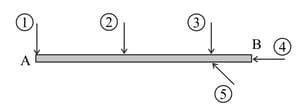
In the figure all the forces are of equal size. State the force that has no moment about point .
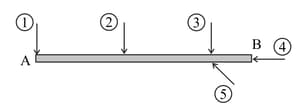
State and explain the condition that means an object will topple (fall over).
Decide whether each object will fall over. Explain your answer.
Explain, using your knowledge of stability, which of the two cars in figure you would expect to be able to go around a corner at the highest speed, whilst keeping all its wheels on the road.


